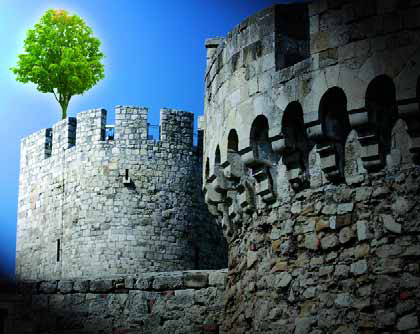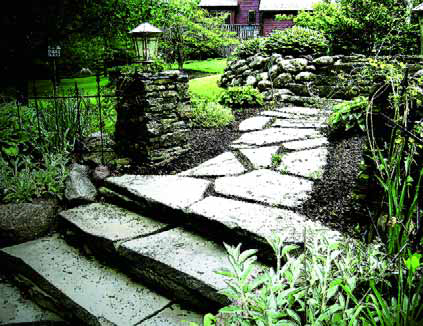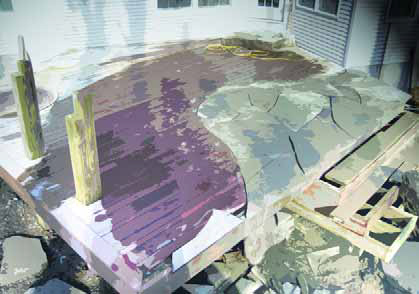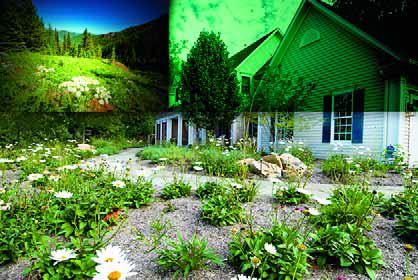Landscape, Plants, Hardscape & Decks
Early in the history of garden design – dating back to the earliest days of civilization in Sumeria, Egypt and China – plants took center stage in garden spaces. Terraces and hanging gardens were built not for their innate ornamental qualities, but rather to display the plants they contained. Always, the prized plant was more important than its container. This preeminence of plant displays has been the rule rather than the exception throughout history, even
I recently read a short article in a construction magazine in which the writer described a fairly convoluted process by which he had “protected” a tree on the site where he was working. Basically, what he did was wrap the trunk in two-by-four studs, securing them in place vertically with some loops of metal strapping. In his estimation, this was just what he needed to keep the tree from being damaged by accidental equipment bumps – the boards, in effect, would suffer and the tree
Last month, I introduced my rundown on books I like to have at hand in my studio by mentioning a project that included a pool, an outdoor kitchen, stone walls, a fire pit and some other amenities. A feature I didn't mention - but one that may well be unique for a backyard in upstate New York - was the Peruvian Travertine we chose for use around the pool. While decking material seldom takes center stage in a design, its high visibility tends to make it more than just a bit player. Indeed, the choice of a material can either
Last month, I introduced my rundown on books I like to have at hand in my studio by mentioning a project that included a pool, an outdoor kitchen, stone walls, a fire pit and some other amenities. A feature I didn't mention - but one that may well be unique for a backyard in upstate New York - was the Peruvian Travertine we chose for use around the pool. While decking material seldom takes center stage in a design, its high visibility tends to make it more than just a bit player. Indeed, the choice of a material can either
Growing as a designer is often a matter of seeing things from fresh perspectives. As one with roots in the pool industry, for example, I once thought first about water and about plants and softscape later (if at all). That bias isn't uncommon, of course: I know plenty of landscape architects and designers who think about plants first and only later consider water. It all has to do with our
Reading WaterShapes' 100th issue brought back memories of when I first discovered the magazine and my early conversations with its editor, Eric Herman. I remember thinking at that time - or at least hoping - that there really were lots of other people out there in the design/build world who truly aim to do things right, first time, every time. In looking over the poster included with the issue, I spotted the one from January 2000 with a photograph I'd taken of one of our projects - a retaining wall under construction. I don't know quite why, but that image made me think of a site I visited last year where a retaining wall built by inexperienced hands was in the process of collapsing. And not only was the wall falling apart, but it was also compromising the fence atop it as well as a concrete patio, a storage shed and an inground pool it was intended to bolster. I couldn't help thinking that, as far as our industry has come in the past decade, there are always going to be those who
Stairs, to borrow an immortal phrase from Rodney Dangerfield, “get no respect.” In fact, if my observations through the years tell me anything, the stairs set in far too many landscapes are strictly utilitarian objects – no more than a means of getting from one level of a space to another. The only thought that seems to go into some of them has to do with avoiding trip hazards, which is important but hardly the most aesthetically oriented of approaches to take. In my experience, when stairs are considered in deliberate and creative ways, they can become
Where I work in the northeastern United States, several species of trees and shrubs have been staples of residential landscape design for so long that stands of these arboreal mainstays (very often deployed by firms not known for their creativity) have become something of a visual cliché. Through the years, however, I’ve found that even these shopworn landscape icons can be used in beautiful and often surprising ways that seem perfectly suited to their environments while also making
I’m sort of a curmudgeon when it comes to wood decks. They’ve been on the scene for a good 50 years now, and many of them are just fine – but I’ve spent an awful lot of time in my career loathing what I see and helping my clients remedy the short-sightedness of those who set them up in the first place. At times, I just wish everyone had stuck to stone. What really gets my goat are the uninspired linear expanses that poke aimlessly off the backs of houses. Residential developers often resort to
My part of New York hasn’t been hit too hard so far, but it seems these days as though much of the United States is in the throes of a sustained and (in places) severe drought. Even where I am, we’re in what the meteorologists are calling a “moderate” dry spell. This turn of events has made me determined to design landscapes requiring as little water as possible – one consequence being that I now do all I can to avoid using large expanses of





















